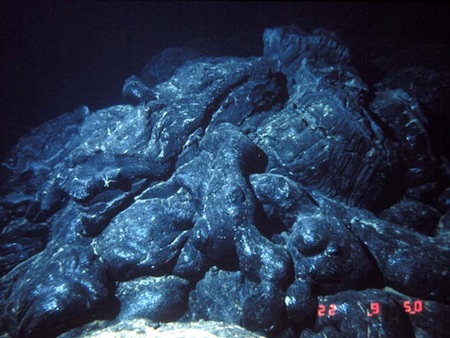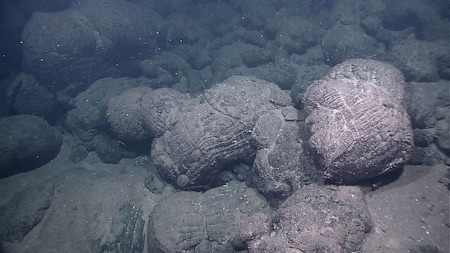
![Submarine lava flows offshore of San Benedicto island [Megan Lubetkin]](img/subbanner.jpg)
![Map of seafloor age [NOAA]](img/Age_of_oceans.jpg)
Most volcanic activity on Earth takes place at mid-ocean ridge spreading centers deep below the sea surface, like the Mid-Atlantic Ridge (red areas on the map shown here).
The average depth to the mid-ocean ridge is about 2800 meters. At this depth, the pressure is 300 times the atmospheric pressure and the water temperature is close to freezing.
New oceanic crust is continuously being formed at these depths due to submarine eruptions, as the lithospheric plates spread apart.
Eruptions at mid-ocean ridges discharge mostly basaltic magma that produces unique types of lava flows due to the presence of seawater.
Observing Submarine Eruptions and Flows

In this part of the exercise, you will observe video of a submarine eruption and examine the types of flows that are produced by this activity.
For Task 2, please do the following:
1. View the video of eruption 1 and describe the activity in the field notebook using your own words
2. View the resulting flows from eruption 1, and describe their features in the field notebook
These photos show submarine lava flows from the seafloor. In your field notebook, briefly describe the characteristics, such as shape, texture, and color, of lava flows formed by submarine eruptions.



Once you have completed your descriptions of eruption 1, you can move ahead to the next page.